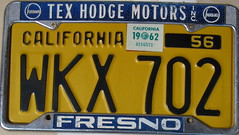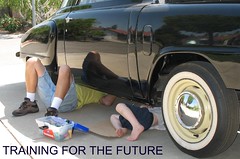Everyone knows about the Lark-based trucks sold in Argentina in 1961/62. It appears they also imported the standard Champ trucks as well. There seems to be a lot of local supplied parts on these trucks and it was weight rated to carry 1000 kilograms (2205 lbs). Along with the photos, including the link to the original article.
Champ Road Test in Argentina (esp.)








Champ Road Test in Argentina (esp.)















Comment